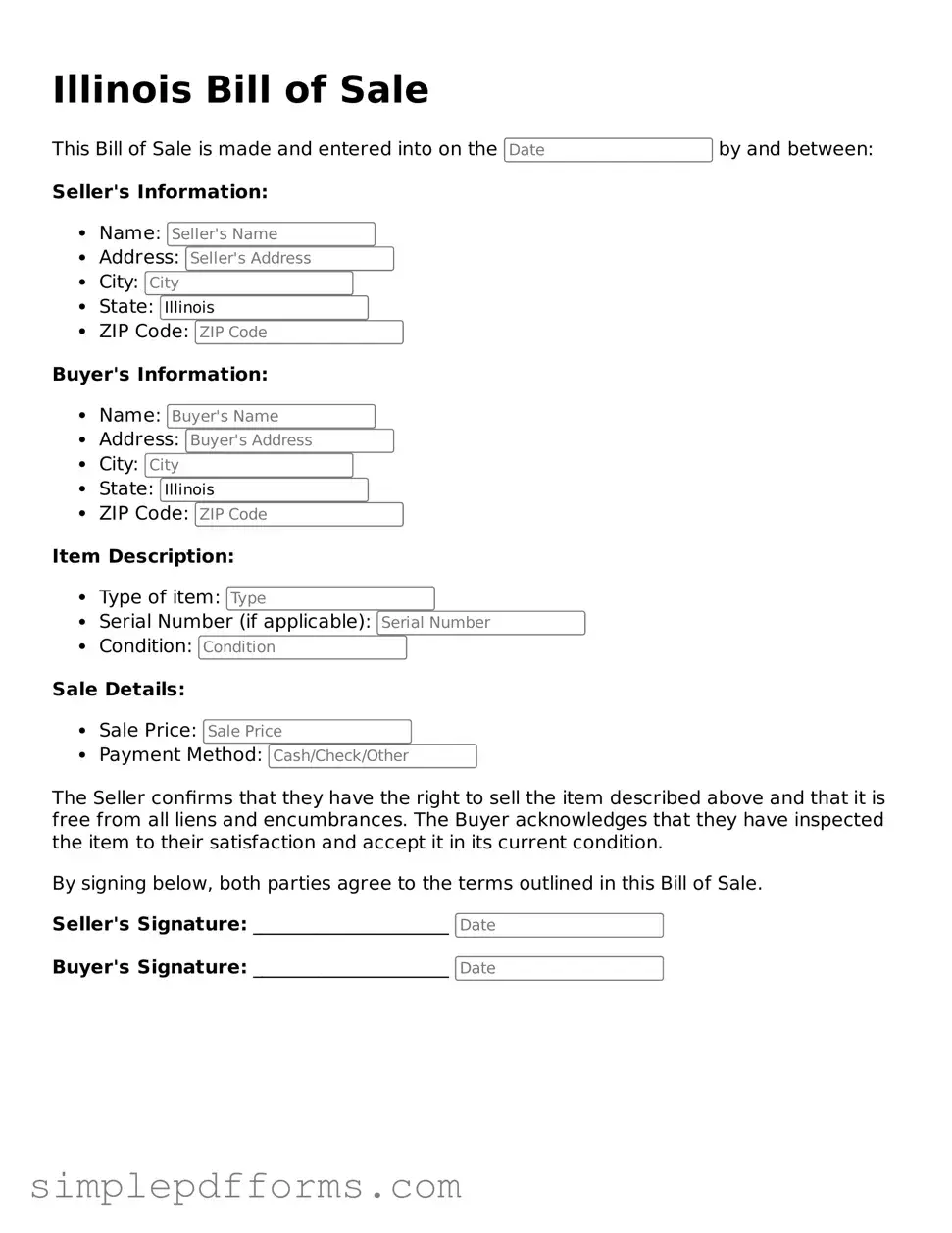Filling out the Illinois Bill of Sale form can seem straightforward, but many people make common mistakes that can lead to complications down the line. One frequent error is failing to include all required information. Buyers and sellers must provide complete details, including names, addresses, and vehicle identification numbers. Omitting any of this information can render the document invalid.
Another mistake is not signing the form. Both the buyer and seller must sign the Bill of Sale for it to be legally binding. If one party forgets to sign, it may create issues when trying to transfer ownership or register the vehicle. Always double-check that both signatures are present.
People often neglect to date the form. Including the date is crucial, as it indicates when the sale occurred. Without a date, it may be difficult to establish the timeline of ownership, which can lead to disputes or confusion later on.
Incorrectly stating the purchase price is another common pitfall. The Bill of Sale should reflect the actual amount paid for the item. If the price is listed inaccurately, it can raise red flags with tax authorities and may lead to additional taxes or penalties.
Many individuals fail to include a description of the item being sold. A vague description can lead to misunderstandings. Providing detailed information, such as make, model, year, and condition, helps clarify what is being sold and protects both parties.
Not keeping a copy of the completed Bill of Sale is a mistake that can have serious repercussions. Both the buyer and seller should retain a copy for their records. This document serves as proof of the transaction and may be needed for future reference or legal matters.
Finally, people sometimes overlook the importance of notarization. While not always required, having the Bill of Sale notarized can provide an extra layer of protection. It verifies the identities of the parties involved and can help prevent disputes over the transaction.
